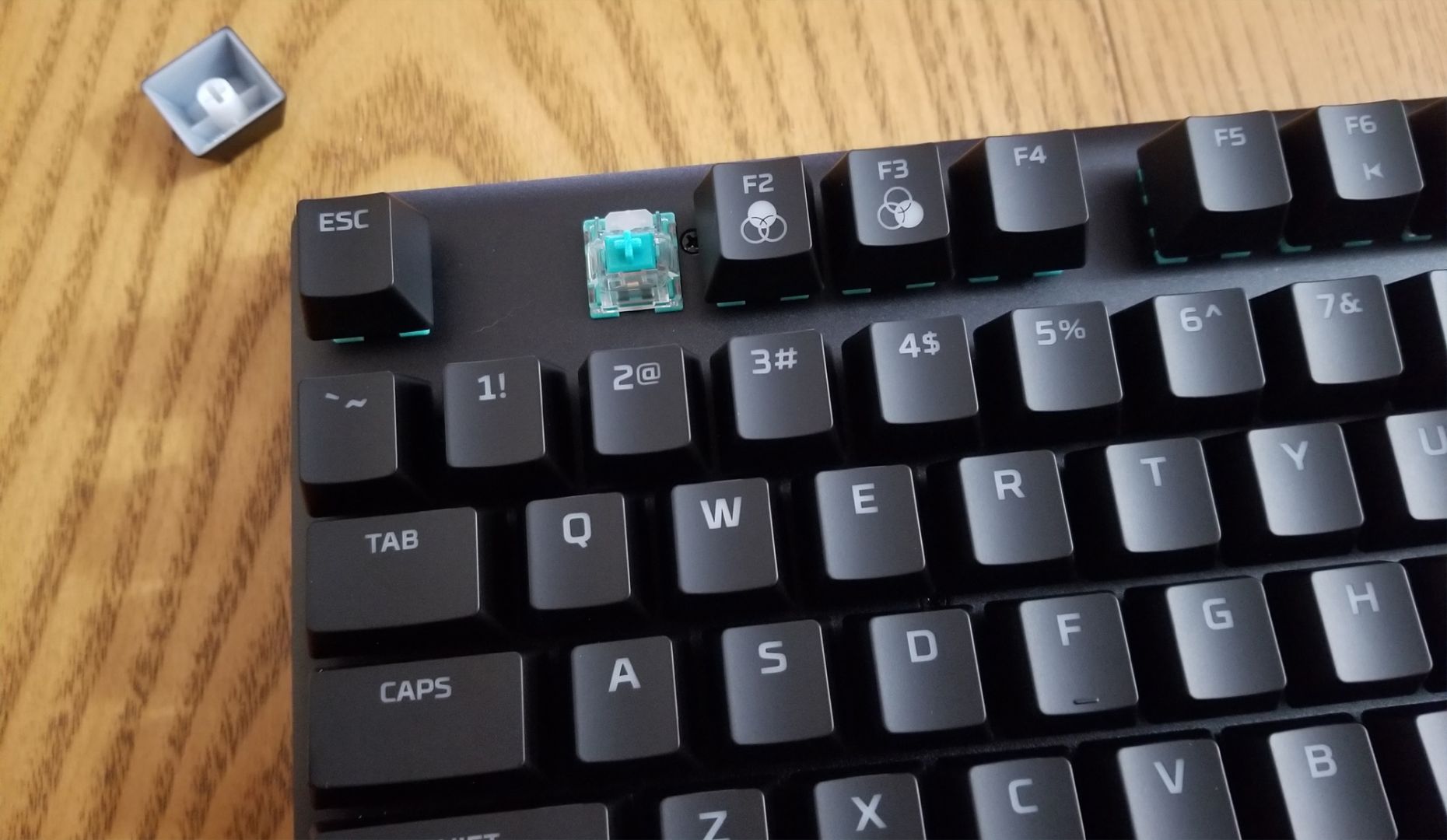
I enjoyed using both types of switches on the Alloy Origins, and can see arguments for either type. While it’s true that the Linear Reds felt a bit quicker to respond, the Tactile Aquas were a joy to type with due to their responsive physical feedback. After using HyperX switches for several months and trying two different types of HyperX switches, I can honestly say they’re the best feeling switches I’ve had the opportunity to use in a mechanical keyboard. The objective numbers back this up when we compare switches. All HyperX switches have a 1.8mm actuation point, a 3.8mm total travel distance, and are rated for 80 million keypresses before loss of quality (compared to Cherry MX’s standards of a 2mm actuation point, total travel distance of 4mm, and rated lifespan of 50 million keystrokes per key). I’m not sure if it’s the actuation point, the travel distance, or the added durability, but HyperX switches feel crisper and more responsive. They also use exposed DIP LEDs to display brighter external lighting, and I’ve certainly observed the vibrancy of the colors.

In October, I gave the Alloy Origins with Red switches a 4.5 rating, shaving of a half point due to two things: lack of NGenuity support for anything besides Windows 10 and uncertainty of the in-house switch’s importance. Since then, though, things have changed: extended support for Windows 7 has officially concluded and I’ve become a HyperX switch believer after prolonged use. The Alloy Origins with Aqua switches gets a 5 out of 5 from me, not because it’s intrinsically better than the Origins with Red switches, but because it made me realize that the Origins is my favorite mechanical keyboard to date and that the time and effort that HyperX put into making in-house switches really shows.
